Das ist jetzt mein 4. Modul aus dieser Desktop- Serie von Moog. Ich konnte nicht widerstehen mir das Gerät zu leisten, obwohl ich erst kürzlich den Spectravox erworben hatte, das auch erst kurz vorher erschienen ist ( was habe ich mich geärgert schon wieder viel Geld für ein neues, interessantes Mooggerät auszugeben ;-))
Moog wendet sich jetzt der Westcoast Klangsynthese im Buchla- Stil zu, was m.E. die moog’sche Klangvielfalt sinnvoll erweitert. Das Labyrinth ist eine Art rhythmischer Klangerzeuger mit 2 x 8 Step Sequenzern die auch in Reihe geschaltet werden können und damit 16 Steps ergeben. Es gibt einen Zufallsgenerator für die jeweiligen Sequenzen, welche je nach Grad der Einstellungen über den Corrupt Regler regulieren in wie weit sich die Patterns verändern b.z.w. alterieren und zu bestimmen wie weit sie sich von den Grundeinstellungen entfernen. Gefällt die resultierende Sequenz, kann der Rhythmus eingefroren werden. Das ist eines der wesentlichen Grundfunktionen dieser etwas anderen Rhythmusmaschiene. Zudem sind auch Polyrhythmen möglich und man kann es mit zahlreichen Patchbuchsen gut in ein modulares/semimodulares System einbinden, zudem gibt es eine Midi- Schnittstelle über eine 3,5 inch Buchse. Das Gerät kann aber auch im Stand alone Modus gut benutzt werden.
Die Sounds der zwei Oszillatoren sind gut und arbeiten mit Frequenzmodulation, was im Gegensatz zu der üblichen moog’schen filternasierten subtraktiven Klangsynthese, eine interessante Neuerung ist und neue Klangräume eröffnet.
Die Verarbeitung, ist wie bei Moog üblich sehr gut, nur die kleinen Regler kann man kritisieren, und ich Leiste mir dafür die leider sehr teuren Erweiterungs-Aufsätze von Moog, welche die Handhabung jedoch deutlich verbessern.
Die Palette der ungewöhnlichen Rhytmusmaschien von Moog wird neben dem DFAM und dem Subharmonicum mit dem Labyrinth weiter ausgebaut, und man solle eine gewisse Experimentierfreude haben um sich auf diese Geräte und insbesondere auf das Labyrinth einzulassen.
Wer Spaß am experimentieren hat, dem empfehle ich das Labyrinth ganz klar, denn ich habe bereits nach wenigen Tagen viel Spaß mit dem Gerät.


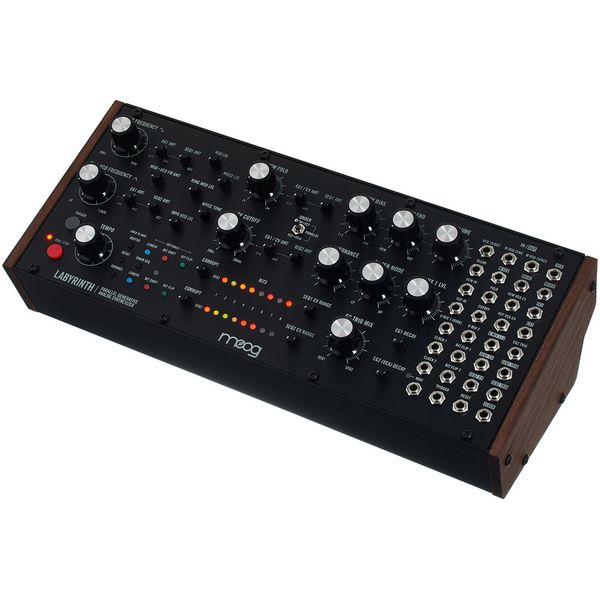
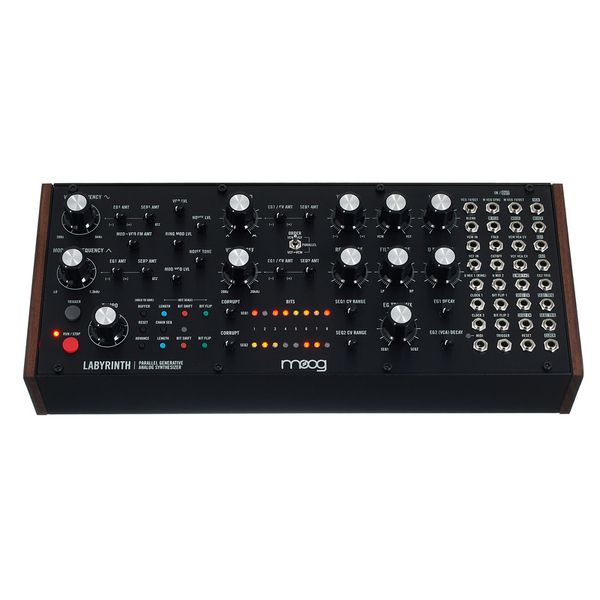
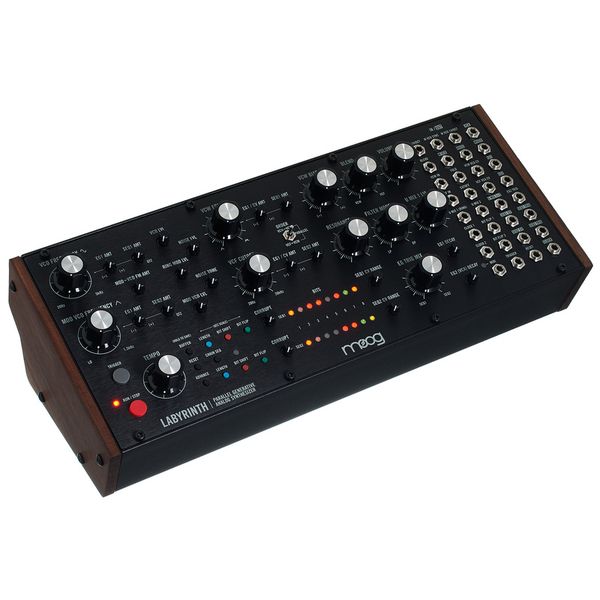
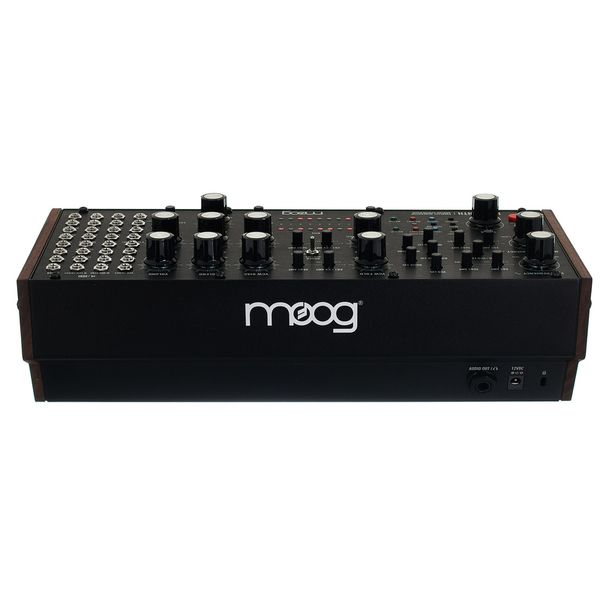
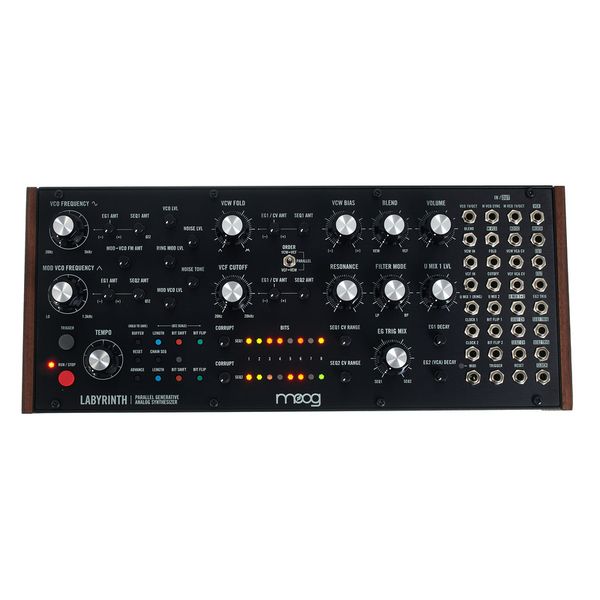
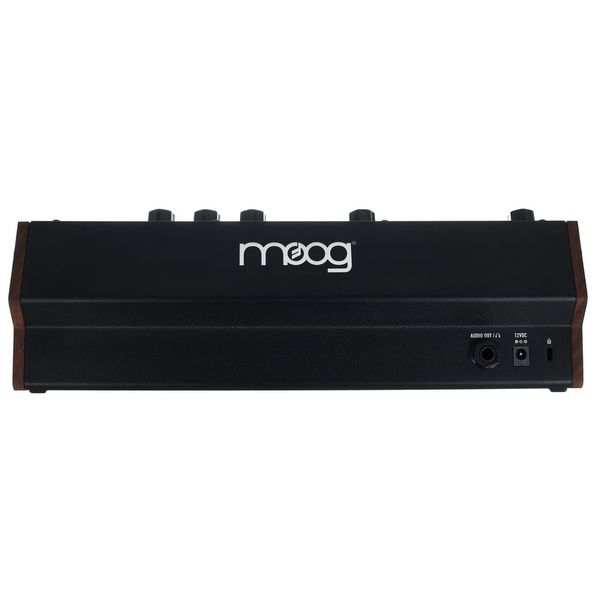
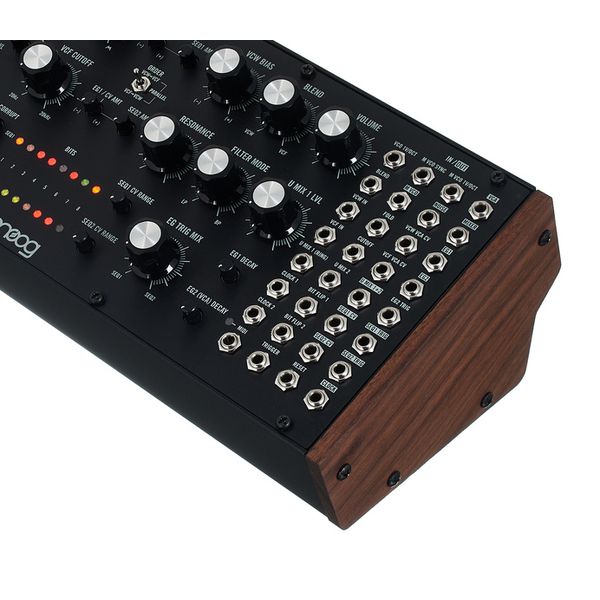
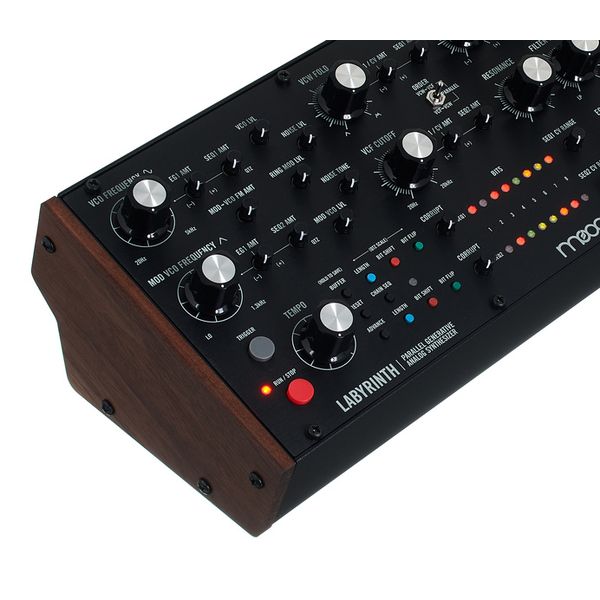
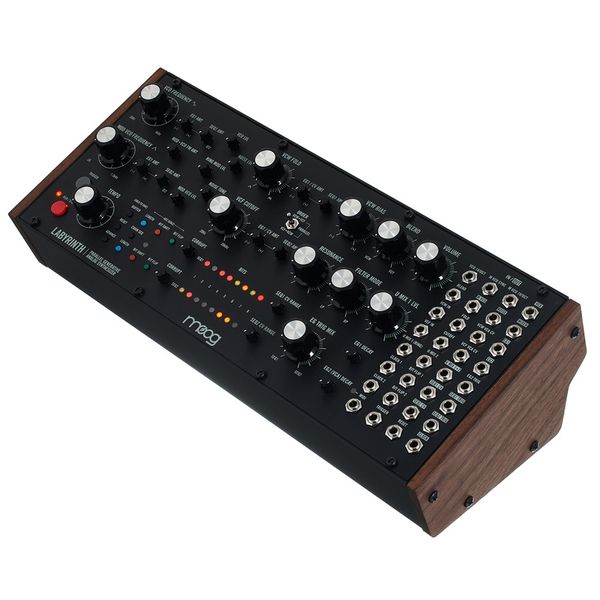
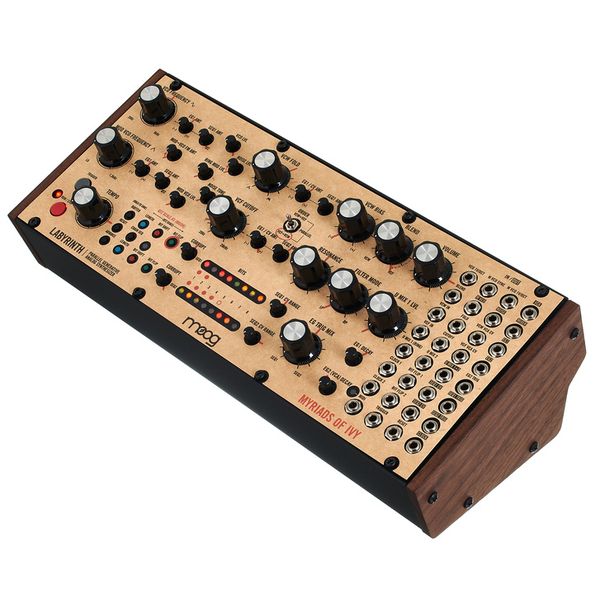
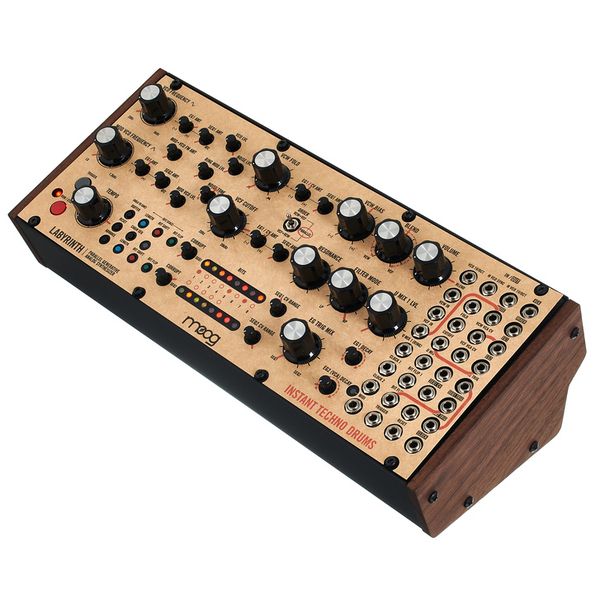
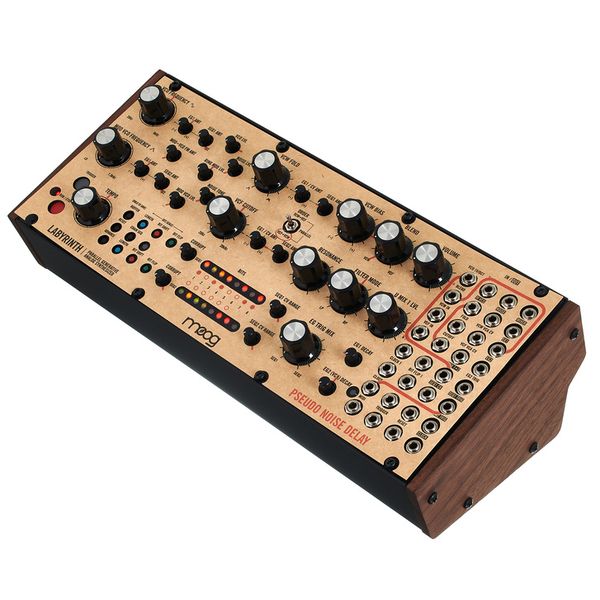
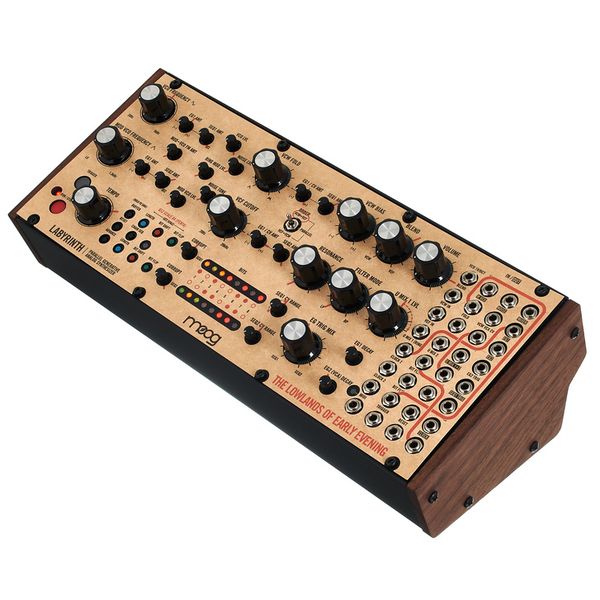
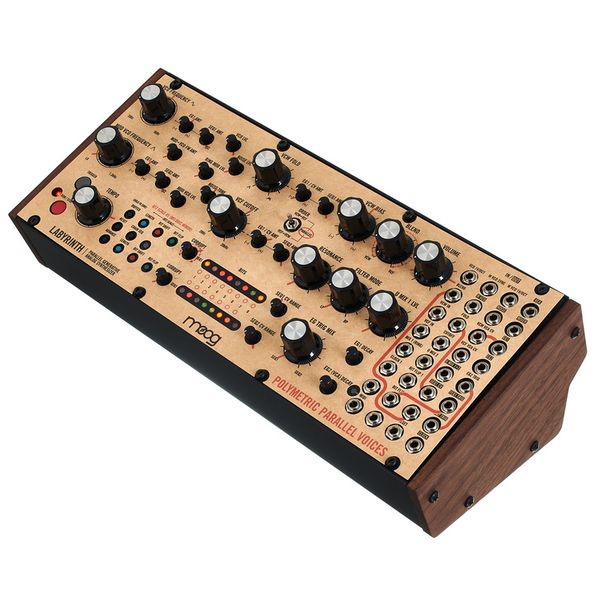
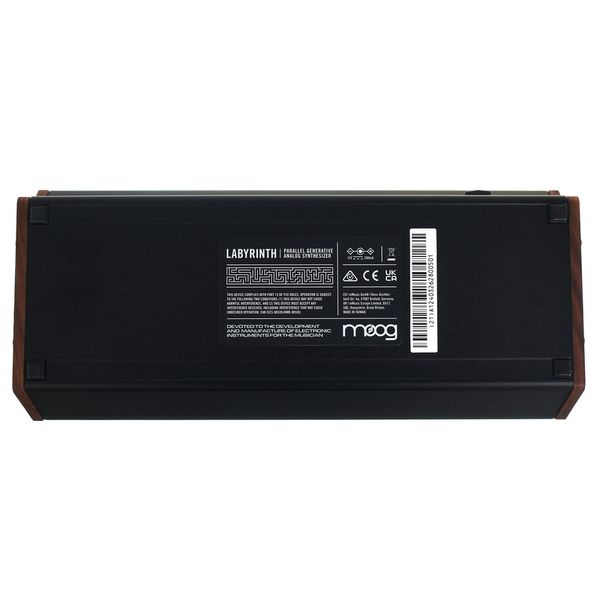
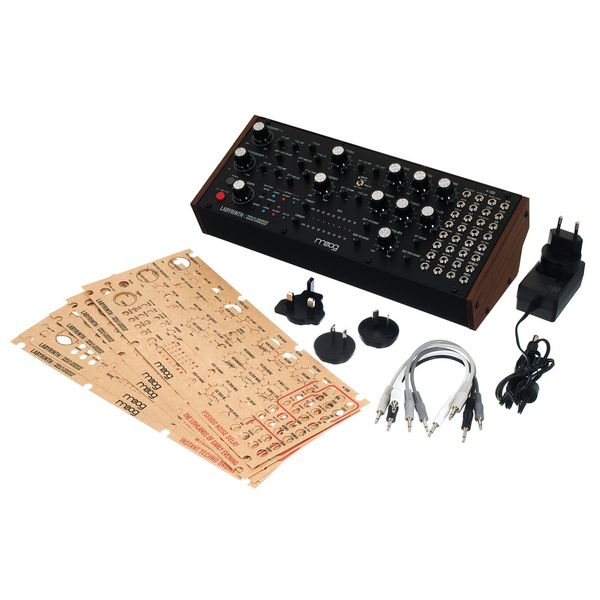

















)
)
)



